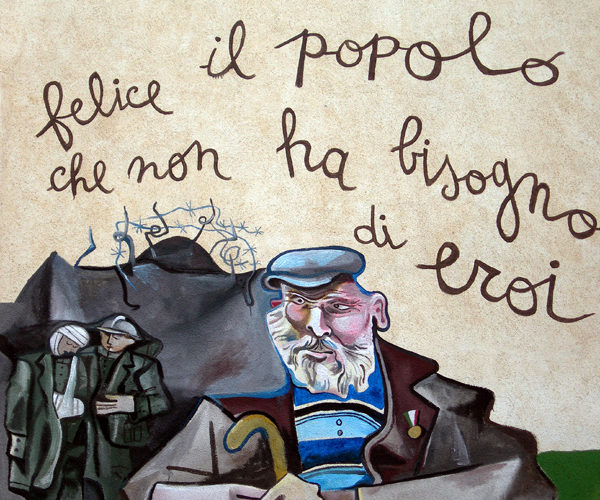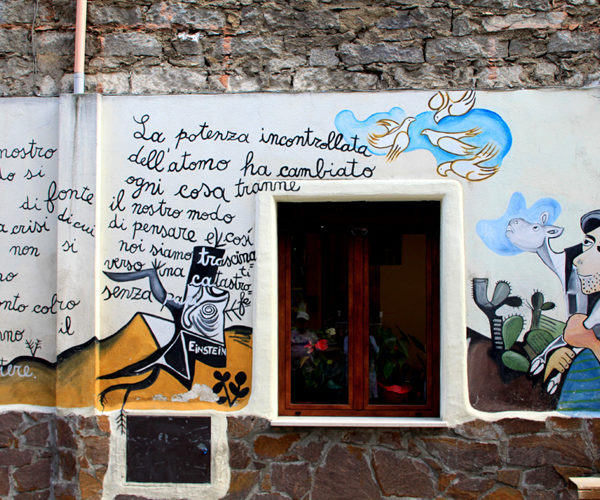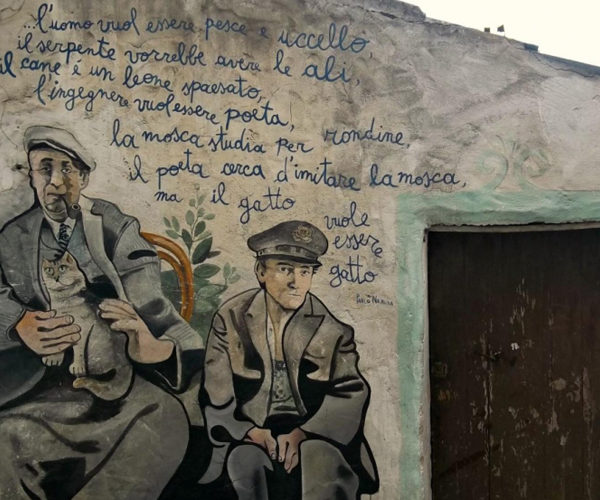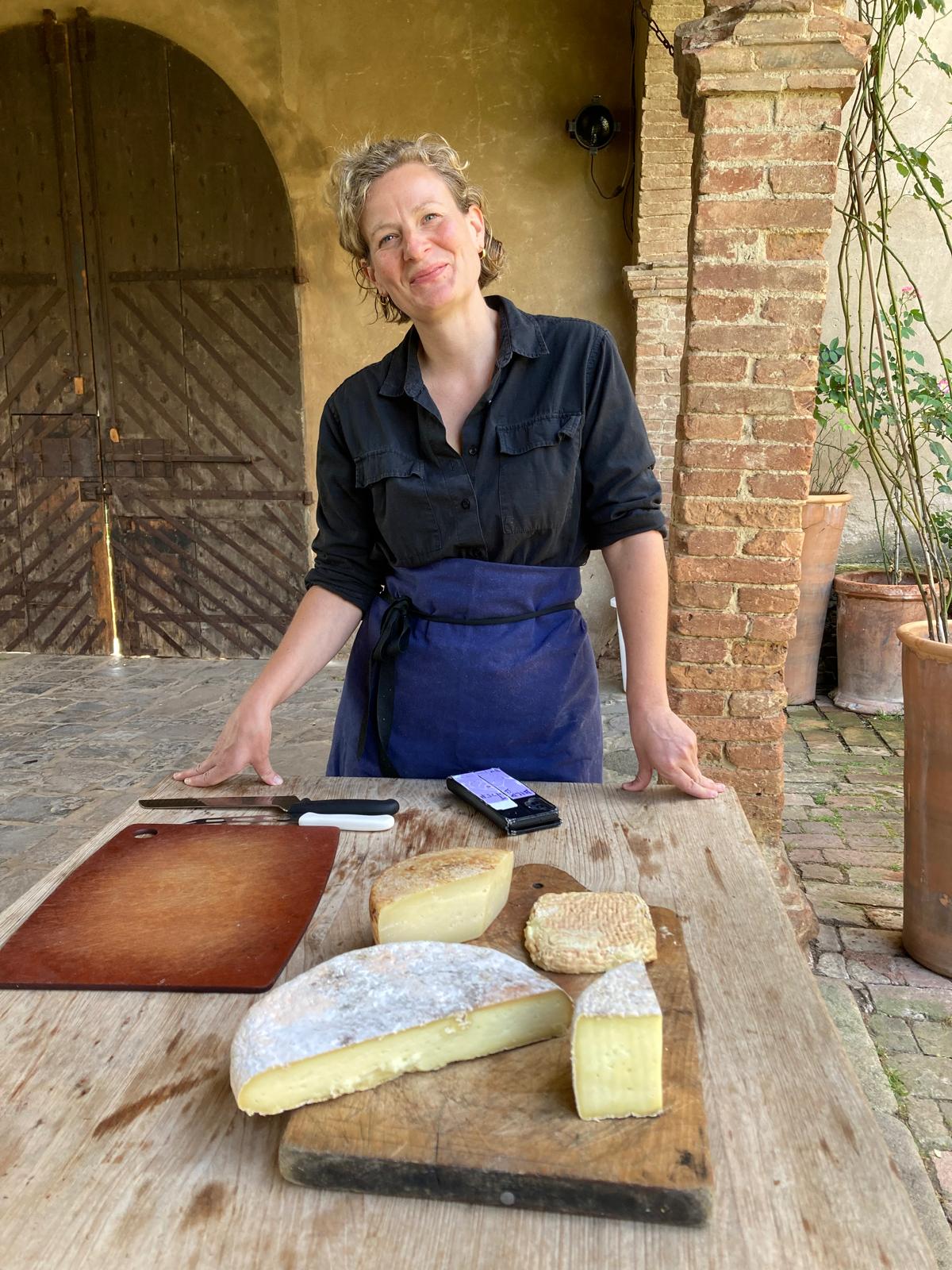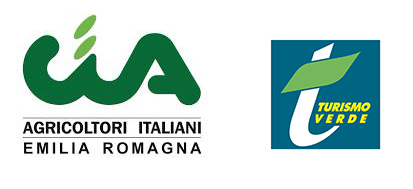
Cantine di Orgosolo
Make Me Italy has chosen Cantine di Orgosolo because:
- They represent a unique model of virtuous application of a collectivity philosophy.
- The production sites, uncontaminated, undergo processing aimed at preserving the soil’s biochemical fertility and water reserves.
- The society directs its efforts towards conserving the varietal heritage of centenary vineyards.
- The people of Orgosolo share and promote an age-old culture of eurhythmic coexistence within themselves and with nature.
- Their natural wines express, without filters, the truth and power of the territory.
A group of small producers, each with their own history and production experience, formed the company Cantine di Orgosolo in 2007. Since then, they have jointly selected the best Cannonau grapes from their vineyards to craft authentic and complex wines, deeply rooted in the local tradition.
Orgosolo, famous for its ancient customs, its murales, and the Supramonte, a symbol of the extraordinary natural environment surrounding it, is not just the center of Barbagia; it is the pulsating heart of Sardinia and one of the last bastions of a specific pre-modern sentiment that places the people at the center of society and related activities, in defiance of private property, capitalism, and any form of modern oligarchy.
Notably, the municipality of Orgosolo remains a rare example of virtuous application of the “uso civico”, a collective right to enjoy community assets, including land. Known as the town of murales, it is one of the most extensive municipalities in inland Sardinia.
Thus, from the feelings of sharing, friendship, and altruism arise community wines: vineyards, nestled at various altitudes in pristine and magical landscapes, yield sweet and robust grapes. Handpicked, they arrive at the winery in small crates after a selection process for further sorting of the clusters, following the one already done in the vineyard. They are conveyed into the destemmer-crusher machine where the separation of the grape berries from the stems and their gentle pressing takes place.
The pressed grapes are transferred into 50 hl wine tanks, where, following the addition of extremely low doses of metabisulfite (5 grams/hl), fermentation begins with indigenous yeasts. During fermentation, careful temperature control is maintained. The same attention is paid to carrying out pump-overs and punch-downs, ensuring that the mass of grape skins and must is exposed to proper oxygenation. All this follows a natural process: fermentation duration ranges from 2 to 3 weeks, after which racking and subsequent gentle pressing of the grape skins take place.
Following an initial racking, the musts, depending on their quality, are conveyed into stainless steel, concrete, or wooden containers.
The territory is characterized by the rugged and wild Supramonte plateau: 50 square kilometers of unspoiled nature, featuring one of Europe’s largest primary holm oak forests, Sas Baddes.
Downstream from the town, there are the high hills of Sorasi and the sun-soaked plain of Locoe, lands always suited to agriculture, mainly vineyards and olive groves. From these two areas, with their granitic nature, come the grapes used in wine production.
The Murales
Orgosolo is also known as the town of murales. The first murale came about almost by chance and represents an “unbalanced scale of justice.” It was created by a group of anarchists from Milan who sought refuge in Sardinia during the years of student protests (1968).
However, it was in the early 1970s that the phenomenon of muralism organically emerged, thanks to the initiative of a young teacher from Siena, Francesco Del Casino, who had moved to Orgosolo and accepted a position teaching art education at the local middle school. Del Casino’s work, supported by his students and imitated by other artists, transformed the gray walls of Orgosolo’s houses into colorful depictions covering diverse themes: from social issues to political, cultural, and environmental matters. Today, it serves as a kind of “mural newspaper” to which the people of Orgosolo remain strongly attached and is visited by thousands of tourists every year.
The Silk
Another peculiarity of this town is silk production, perhaps one of the highest expressions of Orgosolo’s craftsmanship.
The breeding of silkworms and weaving has always been aimed at creating Su Lionzu, the headgear of the characteristic female Orgosolo costume.
The Wines
Located at different altitudes in areas of high environmental value and directly cultivated by the members, the vineyards have an average size just over one hectare. The grape variety grown is Cannonau.
The most common training system is the bush vine (alberello) accompanied by spur-pruned cordons with a reduced number of buds per plant.
The processing methods employed aim to preserve the soil’s biochemical fertility and water reserves.
The society immediately directed its efforts towards conserving the varietal heritage of centennial vineyards. Consequently, the vegetative material used for new plantings is the same as that of the oldest vineyards.


